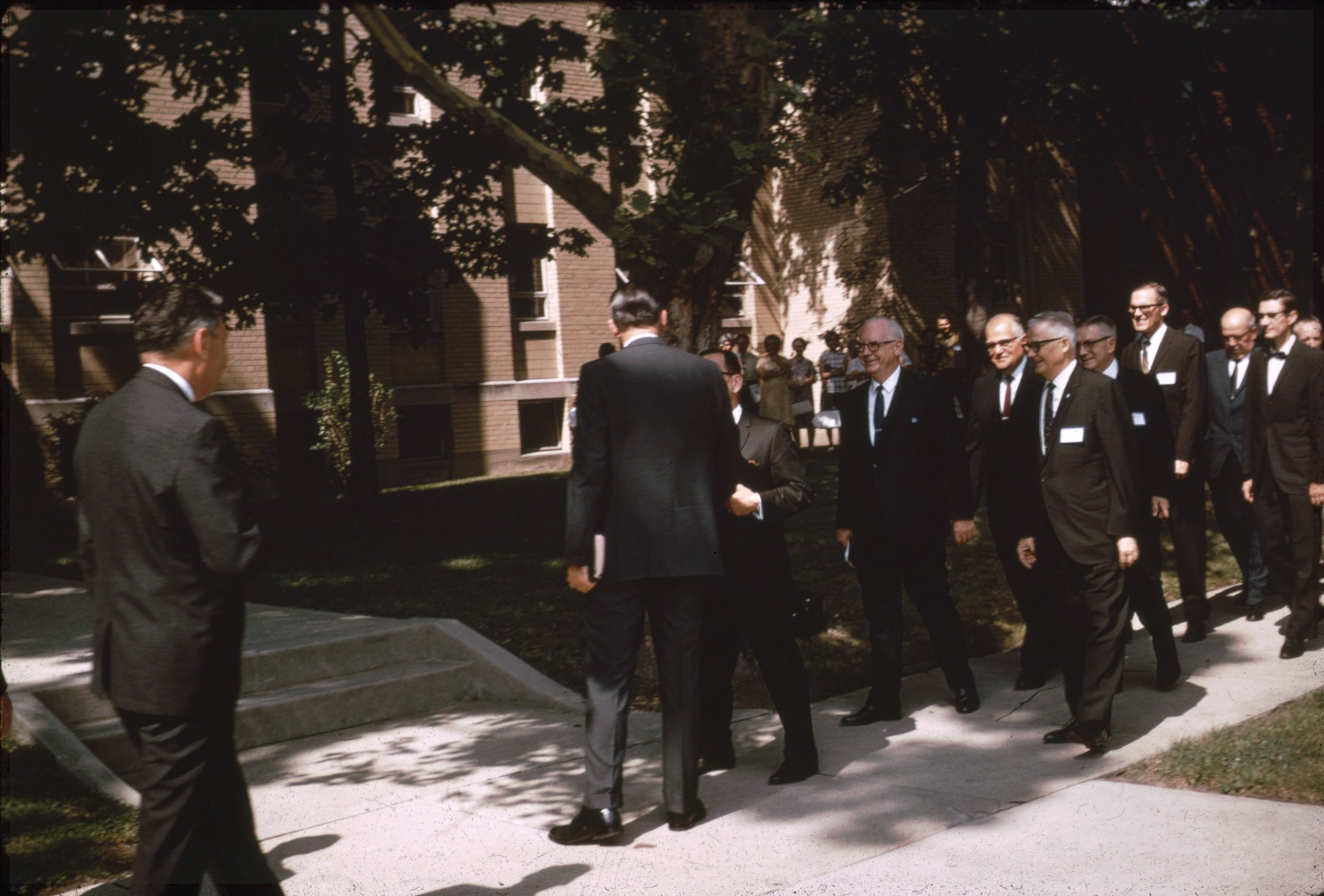
The Missionary Church has a rich theological heritage
We are a unique blend of the thought and life of a people who have sought to build their church according to the Scriptures with an appreciation for their historical roots.
OUR History
In the 1850s, the origins of the Missionary Church emerged when a number of Mennonite ministers were dismissed from their former churches for conducting unsanctioned prayer meetings, attending and conducting revival services, and allowing women to share public testimonies.
These dismissed ministers came together and founded the Mennonite Brethren in Christ denomination (named United Missionary Church in 1947). It was largely through the leadership of Daniel Brenneman and Solomon Eby that the denomination was organized.
Our First missionary
At the 1883 conference at which the Missionary Church was founded, Eusibeus Hershey announced that the new denomination would have its first overseas missionary.
And then in 1890, at the age of 67, Hershey sailed from America, departing the harbor standing with his right hand pointing heavenward until he passed beyond the vision of those who bid him farewell.
Courageous obedience was a common characteristic of the early founders of the Missionary Church
-
Daniel Brenneman was criticized by his fellow clergy for holding prayer meetings outside of the church, for preaching in English to spiritually hungry youth, and for aggressively evangelizing beyond his own Mennonite faith. For these and other practices considered too radical in his old church, Brenneman was removed as a Mennonite pastor. But he remained courageously obedient to his calling and launched an evangelistic thrust north to Michigan and Canada; then west into Iowa, Nebraska, and Kansas. In these locations he planted churches consisting of those who came to faith in Christ during Brenneman’s ministry. Later he linked arms with Solomon Eby in Ontario and William Gehman in Pennsylvania.
-
Solomon Eby was a pastor of a Canadian Mennonite congregation when he came to an authentic saving knowledge of Christ. Admitting to his church that their pastor had not surrendered his life up to that time took both courage and humility. But Eby was obedient to God’s calling. He did not allow pride to keep him from becoming all that God wanted him to be. Nor did he allow his critics to extinguish the flames of renewal in his life. As a result, the Lord used him in a mighty way to raise up young pastors in Ontario who boldly proclaimed the Truth from Scripture.
-
Raised in a Christian home in Ontario, Canada, Joseph Ramseyer’s father died when young Joseph was only four years old. Early in his life he developed a love for God’s Word. At the age of twelve he had read through the Bible. At sixteen he dedicated his life to serving Christ. But the real launching pad for a deep passion to proclaim the name of Christ came in 1891 while praying by a willow bush near Elkton, Michigan.
Immediately following Ramseyer’s Pentecostal experience he sensed a strong calling to proclaim the Gospel. The 22-year-old began preaching in churches, in mid-week prayer meetings, and during house prayer times. Revival broke out in the thumb area of Michigan as a young, Spirit-filled Ramseyer spoke out of obedience to his calling. Souls were saved. Churches were planted. But when he began to preach to those outside his Amish-Mennonite community, he was removed from ministry by his denomination. Seven years later, in conjunction with others with the same courageous obedience to the Lord, he co-founded the Missionary Church Association and later a Bible institute that would become Fort Wayne Bible College.
The Missionary Church Association
Joseph Ramseyer founded the Missionary Church Association after he was dismissed from his former denomination for wanting to be baptized by immersion as a born-again believer in Christ. Ramseyer continued to preach the message of God’s love through Jesus Christ as Savior, Sanctifier, Healer, and Coming King.
In 1898, those who shared his convictions adopted the name “Missionary Church Association” because of their desire to evangelize the world.
We became The Missionary Church.
In 1969, the merger of the United Missionary Church and the Missionary Church Association occurs following a three decade courtship bringing together a staff of nearly two hundred missionaries.
This was possible because both denominations were committed to preaching only what was in the Bible and to evangelizing the world.
one mission – multiple expressions
Then in 2011, The Missionary Church transitioned organizationally from a collection of districts to regions with multiple networks being started under the regional structure. Each network having different styles can broaden and diversify the church planters and churches to partner with, learn from each other, and share in the joys and struggles of our united mission to multiply disciples.
We may change the look and the method, but the mission will never change– Make disciples who make disciples to the fourth generation.
We are thankful for all our visionary leaders who have defined the mission, vision & future of the Missionary Church.
-

William Hossler
2001-2013
-

John Moran
1987-2001
-

Leonard DeWitt
1981-1987
-

Kenneth Geiger
1969-1981
interested in finding out more?
archives & historical collections
The online library showcases some of the collection’s more visually interesting material, including photographs of people, churches, and camp meetings. The Archives itself houses a large collection of documents, including books, minutes, and conference journals that tell the history of the Missionary Church.
the Historical Society
The Missionary Church Historical Society is an organization affiliated with the Missionary Church to help preserve its history and to stimulate interest in learning about the denomination’s past. Dr. Wayne Gerber, then Dean of Bethel University, and other interested people, organized it in March 1979. It has operated continuously since then. Members of the historical society are men and women from all walks of life who are interested in the history of the Missionary Church.
The story of the Missionary Church
In this history of the Missionary Church up to the merger in 1969, Dr. Dennis Engbrecht, professor at Bethel University, communicates significant events and circumstances that have shaped our denomination. It is an excellent resource for membership classes and individuals. It helps one to know who we are and from where we have come.
LIBRARy
History of the United Missionary Church
by Everek Richard Storms, M. A.
History of the Mennonite Brethren in Christ Church
by Jasper Abraham Huffman
The Missionary Church Association
Historical Account of Its Origin and Development
by Walter H. Lugibihl and Jared F. Gerig
HISTORICAL PAPERS
The Missionary Church:
From Radical Outcasts to the Wild Child of Anabaptism
by Dr. Timothy Erdel
Merging and Diverging Streams:
The Colorful Complex History of the Missionary Church
by Dr. Dennis Engbrecht
Marriage, Memory, and Mission:
Reflections on the 25th Anniversary of the MCA/UMC Merger
by Dr. Timothy Erdel & Dr. Dennis Engbrecht
1883-1983:
One Hundred Years of Historical Distinctives
by Dr. Dennis Engbrecht








